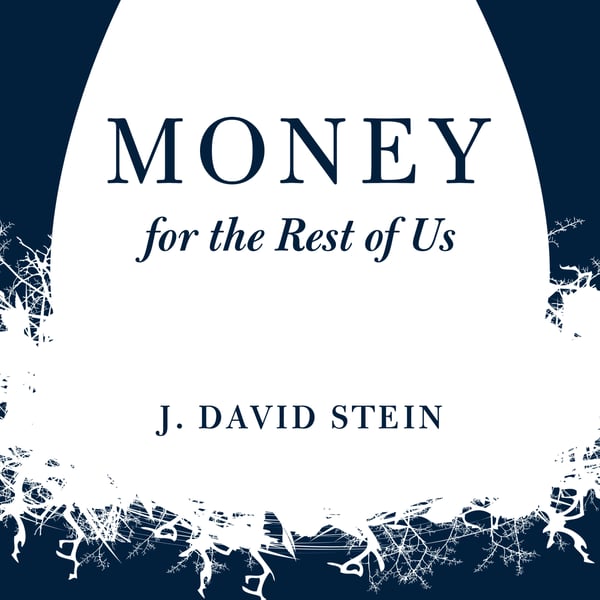How to Invest in Private Credit / Direct Lending
Money For the Rest of Us
J. David Stein
4.3 • 1.3K Ratings
🗓️ 29 January 2025
⏱️ 31 minutes
🧾️ Download transcript
Summary
We explore what private credit, or direct lending, is and how to invest in it. We also show how it is similar and different from investing in leverage loans and CLOs.
Topics covered include:
- Why more companies are staying private
- How private credit differs from the leverage loan market
- Why private credit is growing so rapidly
- What are the benefits to private credit investing
- What are liquid and less liquid ways to invest in private credit
Sponsors
Insiders Guide Email Newsletter
Get our free Investors' Checklist when you sign up for the free Money for the Rest of Us email newsletter
Our Premium Products
Show Notes
The Credit Markets Go Dark by Jared A. Ellias and Elisabeth de Fontenay—SSRN
The Lost Promise of Private Ordering by Cathy Hwang, Yaron Nili, and Jeremy McClane—SSRN
Investments Mentioned
VanEck BDC Income ETF (BIZD)
Barings Corporate Investors Fund (MCI)
Long Angle
Cliffwater Enhanced Lending Fund
BlackRock Private Credit Fund (BDEBT)
BondBloxx Private Credit CLO ETF (PCMM)
Virtus Seix AAA Private Credit CLO ETF (PCLO)
See Privacy Policy at https://art19.com/privacy and California Privacy Notice at https://art19.com/privacy#do-not-sell-my-info.
Transcript
Click on a timestamp to play from that location
| 0:00.0 | As a long-term investor, you need long-term insights. Use Asset Camp to look past speculative |
| 0:05.8 | market hype and understand past performance, current trends, and model expect returns for stock |
| 0:11.5 | and bond indexes. Markets move in cycles. Don't miss what's next. Get a seven-day free trial at |
| 0:17.8 | assetcamp.com. That's A-S-S-S-E-T-C-A-M-P.com. Welcome to money for the rest of us. |
| 0:26.2 | This is a personal finance show on money, how it works, how to invest it, and how to live without |
| 0:32.2 | worrying about it. I'm your host, David Stein, and today is episode 509. It's titled, Should You Invest in Private Credit? |
| 0:41.1 | A week or so ago, I was on a Zoom call with a number of financial advisors, and a number of them mentioned they had personally invested in private credit, or they were putting their clients in private |
| 0:56.7 | credit. Now, what is private credit? Sometimes it's called direct lending, and we've talked about |
| 1:02.5 | it in the past, but we've not done a dedicated episode on it. So I'll certainly describe what |
| 1:09.5 | it is, its characteristics, how to invest in it. |
| 1:12.8 | But first, one of the trends that has been going on for a number of decades now that we |
| 1:17.7 | have mentioned on the podcast is the number of publicly traded companies that have |
| 1:24.8 | public stock that we can purchase on an exchange. That's dropping. Back in |
| 1:29.7 | 1996, there were about 8,000 firms that made up the U.S. stock market. Now there's less than |
| 1:36.6 | 4,000, even though the overall economy in the U.S. is bigger. There are fewer publicly traded |
| 1:44.0 | firms. Now, partly that's been a shift in |
| 1:46.4 | the economy as it's become more service-oriented, service-based. That generally leads to smaller |
| 1:53.0 | companies, fewer manufacturing firms, but there's also been more taking public companies private. And startups that are private that grow to a size |
| 2:05.7 | where they typically would have gone public, they haven't. They remain private. And so there are just |
| 2:11.1 | more private firms, fewer publicly traded firms. Now, for most of the past few decades, the opposite trend was in the debt |
| 2:20.0 | world. Historically, companies took out loans from banks, and then over the past few decades, |
| 2:26.8 | we've seen banks syndicate those loans. This is called the leverage loan market. Sometimes it's |
... |
Please login to see the full transcript.
Disclaimer: The podcast and artwork embedded on this page are from J. David Stein, and are the property of its owner and not affiliated with or endorsed by Tapesearch.
Generated transcripts are the property of J. David Stein and are distributed freely under the Fair Use doctrine. Transcripts generated by Tapesearch are not guaranteed to be accurate.
Copyright © Tapesearch 2025.

